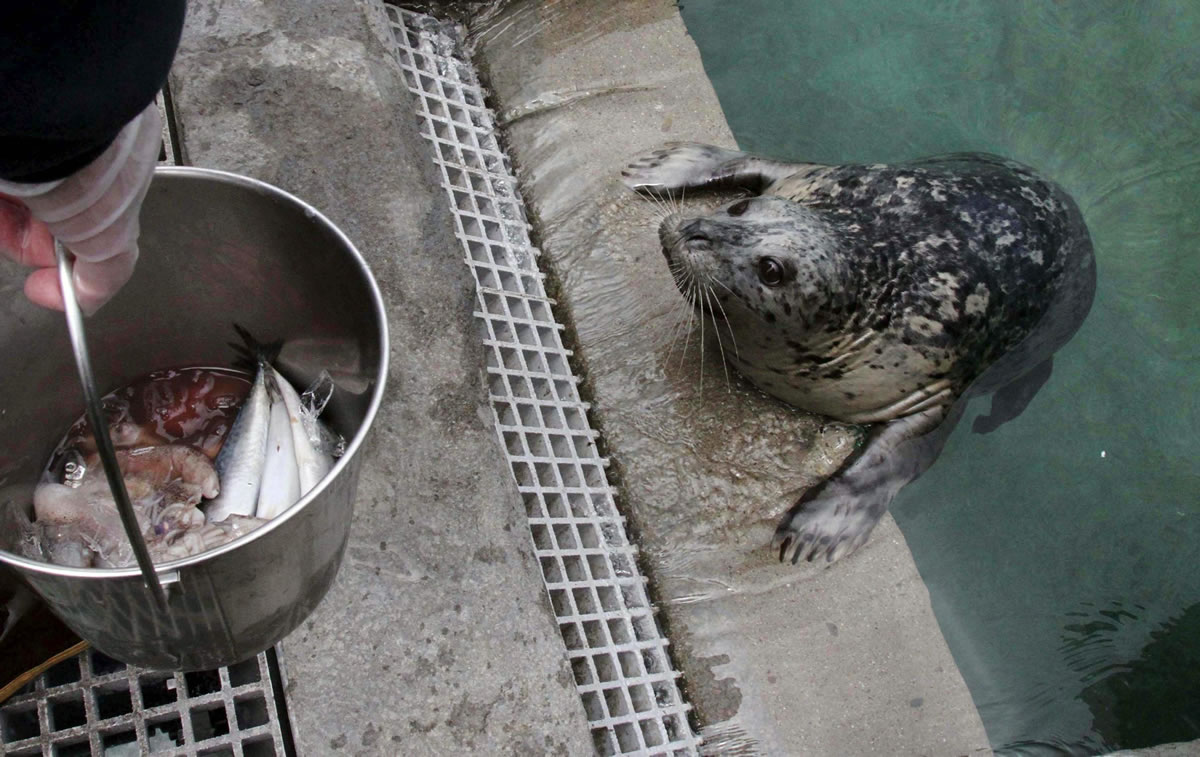SEATTLE — Harbor seals are the homebodies of Puget Sound.
In every bay and cove, the appearance of their domed heads breaking the surface for a look around with those dreamy eyes is one of the signature sights of our waters. Unlike orcas that cruise in and out of our view, harbor seals live out their lives in our midst, picking their spots even in urban waterways and sticking around throughout lives that can stretch past 20 years.
For scientists, that makes harbor seals valuable sentinels of the Sound. Seals have an important story to tell of resilience and survival, revealed in long-term population studies and in tracking studies of contamination levels in their bodies of PCBs and other pollutants.
Once the victims of bounty hunting and even shot for sport, by the 1970s harbor seals dwindled to as few as 4,000 to 5,000 animals in all of Washington state. But with protection under most circumstances under the federal Marine Mammal Protection Act, passed in 1972, their numbers have soared.
There are an estimated 32,000 harbor seals in Washington today, and their population appears to have stabilized, notes Steve Jeffries, marine-mammal research scientist at the Washington Department of Fish and Wildlife, who has studied harbor seals for more than 30 years.
Today, harbor seals can be found from the outer coast of Washington to the Strait of Juan de Fuca, throughout the Hood Canal, South Sound and even far up into fresh water rivers, where they pursue their prey.
In addition to their adaptability to a wide variety of habitats, seals also are not picky eaters, notes John Calambokitis, research biologist with the Cascadia Research Collective in Olympia. Unlike orcas, with their penchant for chinook salmon, seals will eat just about anything: squid, hake, cod, salmon of any species, whatever. And their foraging prowess allows them to take food in virtually any conditions: Seals can dive as deeply as 1,500 feet or chase down food in the shallows.
With their sensitive catlike whiskers, seals detect the pressure waves of swimming prey, enabling them to find food even in the dark, Calambokitis said. “Their ability to catch prey is remarkable, even in murky water,” he noted. “They apparently use their whiskers to sense turbulence in the water in the wake of a fish. Even blind seals still feed.”
Traci Belting, curator of marine mammals and birds at the Seattle Aquarium, said harbor seals can clock speeds that top 17 to 23 mph when they put on a burst of speed to catch prey.
Clumsy on land, where they inch along on their bellies — they don’t have the rotating tail that sea lions use to maneuver — in water, harbor seals zip, spiral and soar with, well, fluid grace.
They don’t chew their prey, but swallow it whole, Belting said. Their sharp needle teeth are for shaking bigger catches, such as salmon, to swallow torn chunks. If you want to see a seal, look for the clouds of seabirds that often follow their foraging.
As top predators, their blubber, over time, writes the story of their lives intermingled with our modern ways, as seals’ bodies accumulate our toxins.
Here, too, regulation has made a difference. Banning PCBs and DDT has resulted in a significant decrease in the amount of toxic chemicals present in the bodies of seals tested in Puget Sound waters, Jeffries said.
And while levels of flame retardants found in seals soared from 1984 to 2003, research by WDFW and other agencies still in review shows that levels of some formulations of those chemicals by 2009 had dropped — a change Jeffries attributes to a ban on the chemicals passed by the Legislature in 2007.
“Regulation, cleaning up Superfund sites, it’s making a difference,” Jeffries said. But more work needs to be done: levels of contamination, especially in Central Puget Sound seals, are still high enough to suppress their immune systems and reproductive success.
“We can’t be lax in our continuing cleanup of pollution of Puget Sound,” Jeffries said. “From whatever sources.”



